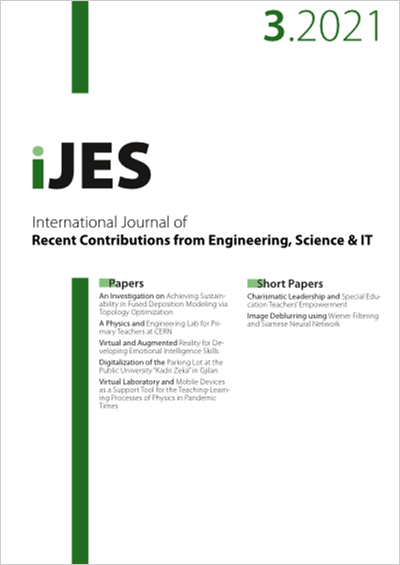Virtual and Augmented Reality for Developing Emotional Intelligence Skills
DOI:
https://doi.org/10.3991/ijes.v9i3.23939Keywords:
emotional intelligence, virtual reality, augmented reality, emotional enhancement, autismAbstract
The development and the cultivation of emotional intelligence and of the skills it can offer to the individual are the main elements and pursuits of contemporary research. The enhancement of self-control, the reinforcement of self-criticism and self-awareness and the cultivation of the constant self-development are the most central objectives of all the people and of the scientists since they are the cornerstone for euphoria. The aim of the present study is the review and the critical reproduction of information and conclusions that have been extracted from the international bibliography regarding the issue in question. More specifically, there will be an effort to evaluate and present the significance of the activities of virtual reality and of augmented reality that contribute to the development of emotional intelligence skills. Along the same lines, there will be an important review of the articles that refer to the exploitation of such digital tools, to achieve the same results for the people suffering from autism as well. Besides, the care for all the members of the society with no exceptions, and certainly of those members that suffer from mental retardation, should be of upmost importance. The present article focuses on the role that those tools play for the amplification of the skills in the sphere of emotional intelligence not only as far as the duration of the research is concerned.
Downloads
Published
How to Cite
Issue
Section
License
The submitting author warrants that the submission is original and that she/he is the author of the submission together with the named co-authors; to the extend the submission incorporates text passages, figures, data or other material from the work of others, the submitting author has obtained any necessary permission.
Articles in this journal are published under the Creative Commons Attribution Licence (CC-BY What does this mean?). This is to get more legal certainty about what readers can do with published articles, and thus a wider dissemination and archiving, which in turn makes publishing with this journal more valuable for you, the authors.
By submitting an article the author grants to this journal the non-exclusive right to publish it. The author retains the copyright and the publishing rights for his article without any restrictions.
This journal has been awarded the SPARC Europe Seal for Open Access Journals (What's this?)


